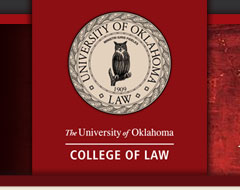Abstract
In two trilogies of Supreme Court Decisions, both involving Native Americans, land is a key metaphor, figuring variously as property, territory, wilderness, and reservation. The first trilogy, written by Chief Justice John Marshall, comprises Johnson v. M'Intosh (1823), Cherokee Nation v. Georgia (1831), and Worcester v. Georgia (1832). The second trilogy concerns Native American claims for religious freedom under the First Amendment and includes Bowen v. Roy (1986), Lyng v. Northwest Cemetery Protective Association (1988), and Employment Division of Oregon v. Smith (1990). The Marshal cases attempted to legitimate the transformation of land from wilderness to territory and property, and in this sense, they appeared "secular." These cases also were "religious" in an important sense: they created a myth of origins that determined the polity's reaction to the land and people on which it was built. Of the religious freedom cases, only one was directly concerned with land, but all three were profoundly shaped by the Marshall trilogy and by judicial reasoning that linked land and religion. As these cases show, judicial events at the intersection of land and religion have been calamitous and, for Native Americans, full of violence and loss. Grounds for hope remain in one meaning of land--the "reservation"--deployed by Marshall in Worcester v. Georgia and artfully analyzed by Philip Frickey in 1993. Reviving the concept of "reservation" promises constructive re-imaginations of both First Nations and religious freedom as unique, foundational political categories.
Recommended Citation
Kathleen Sands,
Territory, Wilderness, Property, and Reservation: Land and Religion in Native American Supreme Court Cases,
36
Am. Indian L. Rev.
253
(2012),
https://digitalcommons.law.ou.edu/ailr/vol36/iss2/1
Included in
Constitutional Law Commons, First Amendment Commons, Indigenous, Indian, and Aboriginal Law Commons
